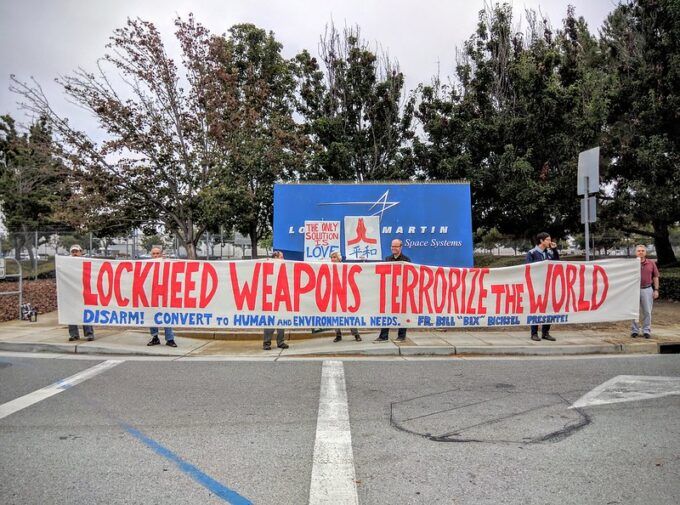
Photograph Source: Travis Wise – CC BY 2.0
In my previous article, “The F-35: Sales to Allied Countries Don’t Mean It’s a Great Plane”, I discussed how corrupt American defense contractors can be, even bribing foreign officials to encourage them to accept deficient aircraft like the F-104 and possibly the F-35. My interest in corruption in the MIC dates back to the days when my late father, a pilot in the Canadian Armed Forces, was involved in flight testing of the Canadian version of the Lockheed P-3 Orion, the CP-140 Aurora, from 1978 to 1981 at the Lockheed facility in Burbank, California. The CP-140 was a vast improvement over the USN’s P-3 and was the subject of envy from USN officers visiting the complex.
Reading an undated paper about those days by Major John Bernard, a Canadian pilot who had graduated from the US Navy’s Test Pilot School, I was intrigued to hear that the Canadian military, at least at that time, had much higher standards than the USN when it comes to accepting new aircraft fresh off the assembly line. In his words “I think everyone fondly remembers the faces of Lockheed management when we returned from our first acceptance flight and said, ‘Now, this is what you have to fix before the next flight.’ Up to that point, their only customer, the USN, had cheerfully accepted what the company offered and then corrected the outstanding deficiencies at their overhaul depots. But not those pesky Canadians. My log book shows as many as six acceptance flights on some aircraft before we were willing to sign for them.”
Why is this? Why did the USN just roll over and accept any piece of junk that Lockheed produced and made the US taxpayers pay for the updates/repairs? Well, this can be easily explained actually. Canada, unlike the US, no longer has a large military aircraft design and production capacity, and therefore many Royal Canadian Air Force pilots don’t end up working on that side of things if they retire early. No, they often end up working as airline pilots. The US, on the other hand, has a massive MIC, probably the largest in the world since World War II, and many retired US pilots are keen to get well-compensated jobs at defense contractors like Lockheed and Boeing, etc. It comes down to this. If a USN officer wants to work for a defense contractor after leaving the service, he or she should not upset the status quo in any way with regard to accepting new aircraft, be it the P-3, the F-35, etc.
Many commentators have complained about this cozy relationship between serving officers and the MIC, and that lousy aircraft get accepted by the service, no questions asked, as a means of pleasing their future employers. I think that explains a lot of it right there.
Is this still going on? I have a hunch it is still very much the case, especially with the F-35. Until the close relations between the services and the MIC are effectively dealt with, and aircraft are properly tested, there’s nothing to dissuade this behavior. I remember a wonderful 1996 documentary by Investigative Reports that was called “Military Weapons: Buy Now, Test Later” that also addresses this issue. The way to solve it I think is to create a new law that requires officers who retired at a rank higher than major or lieutenant commander to not be able to work for defense contractors or forfeit their pensions. This would keep the top brass out of the cycle and encourage high level decisions to enforce standards on accepting new military aircraft.
The fact that Canada was doing this back in the 1970s and 1980s shows just how far behind the US military was, and corrupt too.
Notes
Roger Thompson. “The F-35: Sales to Allied Countries Don’t Mean It’s A Good Plane” CounterPunch, December 19, 2022.
Dr. Marshall Michel, “F-104: Germany’s Widowmaker” Spangdahlem Air Base, July 2015.
Major John Bernard, untitled essay about his experiences with Lockheed as a Canadian pilot, date unknown.
This content originally appeared on CounterPunch.org and was authored by Roger Thompson.
Roger Thompson | Radio Free (2023-01-30T06:53:46+00:00) Why Does the U.S. Military Let Defense Contractors Get Away With So Much?. Retrieved from https://www.radiofree.org/2023/01/30/why-does-the-u-s-military-let-defense-contractors-get-away-with-so-much/
Please log in to upload a file.
There are no updates yet.
Click the Upload button above to add an update.